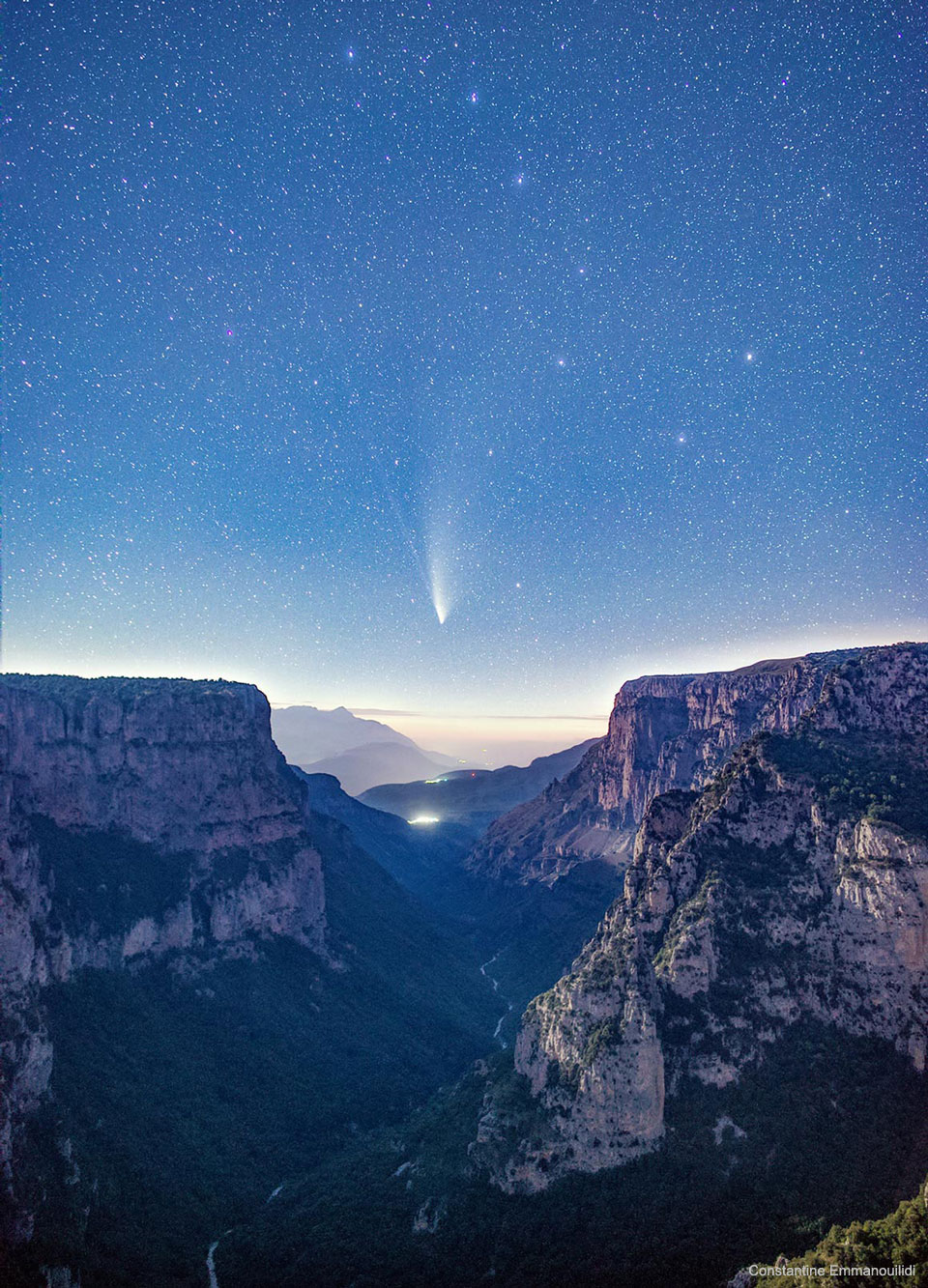2020年8月3日
Comet NEOWISE over Vikos Gorge
Image Credit & Copyright: Constantine Emmanouilidi
Explanation: Did the Earth part to show us this comet? Of course not, even if this image makes it seem that way. Pictured far in the background is Comet NEOWISE as it appeared about two weeks ago over northern Greece. Above the comet are many stars including the bright stars of the Big Dipper (also the Sorcerer, in Aztec mythology), an asterism that many people around the world used to find the naked-eye comet as it hovered in the northern sky over the past month. In the foreground is Vikos Gorge, the deepest gorge on Earth, relative to its width. The gorge was slowly created by erosion from the Voidomatis River over the past few million years. Capturing this image took a lot of planning, waiting, luck, braving high winds, and avoiding local wolves. Comet C/2020 F3 (NEOWISE) continues to fade and is now best visible through binoculars as it coasts back to the outer Solar System.
Comet NEOWISE images from planet Earth: July 31, 30, 29, 28, 27, 26, 25, 24
Tomorrow’s picture: galaxy swirl
维勾斯峡谷上空的NEOWISE彗星
影像提供与版权: Constantine Emmanouilidi
说明: 地球形成这个裂谷就是要呈现这颗彗星吗?当然不是,纵然这幅影像看似如此。影像背景远方的天体,是2个多星期前悬在北希腊上空的NEOWISE彗星。这颗彗星的上方散布着许多恒星,其中包括由七颗亮星构成的北斗七星(阿兹特克神话里的巫师),一个最近世界各地观星人用来定位这颗北天裸视彗星的著名星官。影像前景的维勾斯峡谷,如果以相对峡谷的宽度来度量,应是地球最深邃的峡谷。这道峡谷是弗衣多麻堤斯河在过去数百万年,缓缓侵蚀大地的成果。要拍摄这幅影像,得结合多项元素,包括大量的规划、等待、运气、冒着强风和避开当地的狼群。在返回 太阳系外围的旅程中,NEOWISE彗星(C/2020 F3)不停变暗,目前想好好观赏它得透过双筒望远镜。
来自地球的NEOWISE彗星影像:7月 31日,30日,29日,28日,27日,26日,25日,24日
明日的图片: galaxy swirl








wow